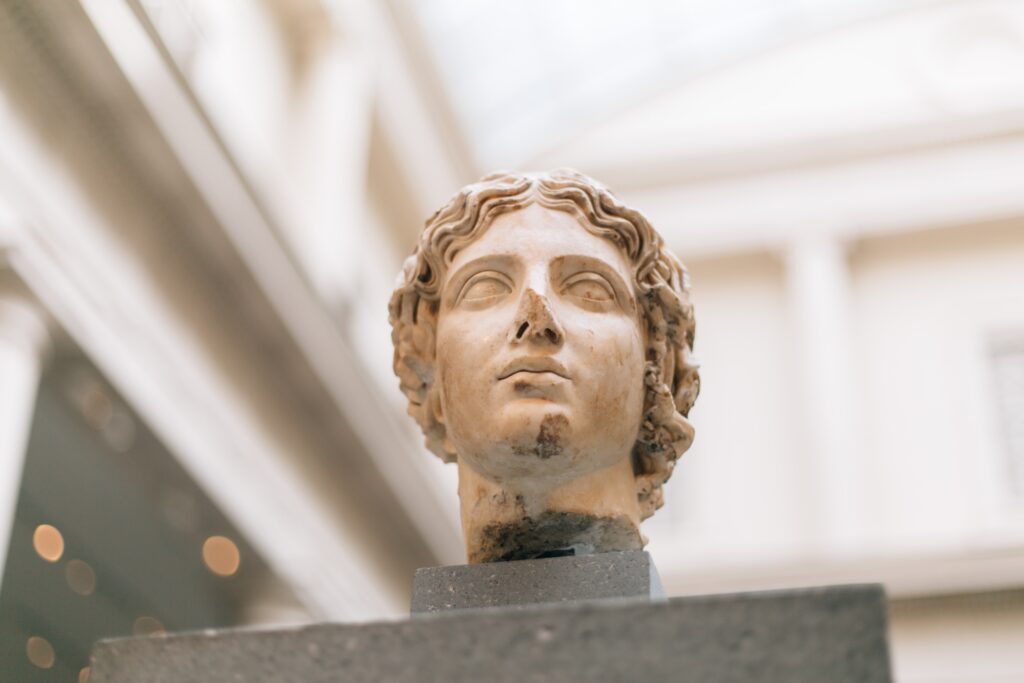El Anatsui, the Ghanaian artist renowned for his monumental sculptures made from everyday materials, has captivated audiences around the world with his innovative creations. Using aluminum bottle caps carefully linked together with copper wire, he defies categorization and invites close examination of his art, offering deep insights into the world we inhabit. His latest masterpiece, titled “Behind the Red Moon,” takes center stage at Tate Modern’s Turbine Hall in London, adding to his impressive repertoire of international exhibitions. Anatsui’s work not only embodies the material sociology of daily life and consumption, but also underscores his perspective of art as an industrial organization with a supply chain that crosses countries. With a focus on combining Western training with local aesthetics and knowledge, Anatsui’s art reinvents sculpture and offers a truly unique proposition in the art world. As he continues to expand his studio and plans to build a cultural center in his ancestral town of Anyako, Anatsui’s influence is set to grow even stronger.

El Anatsui: Monumental Sculptures from Everyday Materials
El Anatsui is a Ghanaian artist known for his monumental sculptures made from everyday materials. He has captivated audiences worldwide with his striking sculptures, which are created using aluminum bottle caps linked together with copper wire. These sculptures challenge traditional notions of art and redefine the boundaries of what can be considered as a sculpture. Anatsui’s work has been displayed at various international exhibitions and has defied categorization, earning him widespread acclaim and recognition in the art world.
Materials and Production
One of the most remarkable aspects of Anatsui’s sculptures is the fact that they are created using inexpensive materials that are widely available in everyday life. The use of aluminum bottle caps as the primary material not only adds a unique aesthetic to the sculptures but also makes them relatively affordable to produce. However, despite their inexpensive nature, Anatsui’s sculptures require large quantities of these materials, which can be a challenge to source.
To meet the demand for his sculptures, Anatsui employs nearly 100 people between his studios in Ghana and Nigeria. These skilled artisans work tirelessly to collect and meticulously link together thousands of bottle caps, transforming them into massive and mesmerizing installations. The collaboration between Anatsui and his team not only highlights the artist’s dedication to his craft but also serves as a testament to the power of art in providing employment and supporting local communities.
Anatsui’s choice of materials holds deep meaning and reflects the material sociology of daily life and consumption. Through his sculptures, he explores the transformation of ordinary, discarded objects into something extraordinary, highlighting the potential for beauty and significance in the most unexpected places. Furthermore, the scale and industrial organization involved in the production of Anatsui’s sculptures also serve as a commentary on global consumerism and the interconnectedness of our modern world.
After spending 45 years in Nigeria, Anatsui returned to Ghana and established a new studio there. This move not only allowed him to reconnect with his roots but also marked a new chapter in his artistic journey. Anatsui’s return to Ghana signifies his commitment to nurturing and showcasing the artistic talent present in his home country, contributing to the cultural landscape of Ghana and furthering the development of the art scene in West Africa.

Reinventing Sculpture
El Anatsui has been praised for his ability to reinvent sculpture and offer a fresh perspective in the art world. By utilizing unconventional materials and techniques, he challenges the traditional notions of what defines a sculpture. Anatsui’s works blur the boundaries between sculpture, installation art, and textile, creating visually stunning and thought-provoking pieces that captivate viewers.
Combining his Western training with local aesthetics and knowledge, Anatsui has developed a unique artistic language that transcends cultural boundaries. He seamlessly weaves together the traditional artistic practices of Ghana with contemporary artistic sensibilities, resulting in a body of work that is both visually striking and deeply rooted in its cultural context.
Anatsui believes that for artists, it is essential to have a variety of experiences and continually push the boundaries of their craft. His willingness to experiment with different materials, techniques, and concepts has allowed him to evolve as an artist and maintain a sense of freshness and innovation in his work. This commitment to exploration and growth has made Anatsui a pioneer in the art world, inspiring future generations of artists to break free from conventions and explore their artistic potential.
Future Plans
Looking ahead, El Anatsui has ambitious plans for the future. He is investing in expanding his studio in Tema, Ghana, to accommodate the growing demand for his sculptures and provide an even more conducive environment for artistic creation. This expansion reflects Anatsui’s dedication to his craft and his desire to continue pushing the boundaries of sculpture.
In addition to expanding his studio, Anatsui also plans to build a cultural center in his ancestral town of Anyako. This cultural center will serve as a hub for artistic and cultural exchanges, providing a platform for local artists to showcase their work and fostering a sense of community and collaboration. Anatsui’s commitment to giving back to his community and nurturing artistic talent is a testament to his belief in the transformative power of art.
In conclusion, El Anatsui’s monumental sculptures from everyday materials have not only redefined the possibilities of sculpture but also offered profound insights into the world we live in. His use of inexpensive materials and his industrial organization highlight the impact of consumerism and our interconnected world. Through his art, Anatsui challenges traditional notions of art and embraces the beauty and significance present in everyday objects. As he continues to reinvent sculpture and invest in the future, Anatsui’s impact on the art world and his community remains immeasurable.


